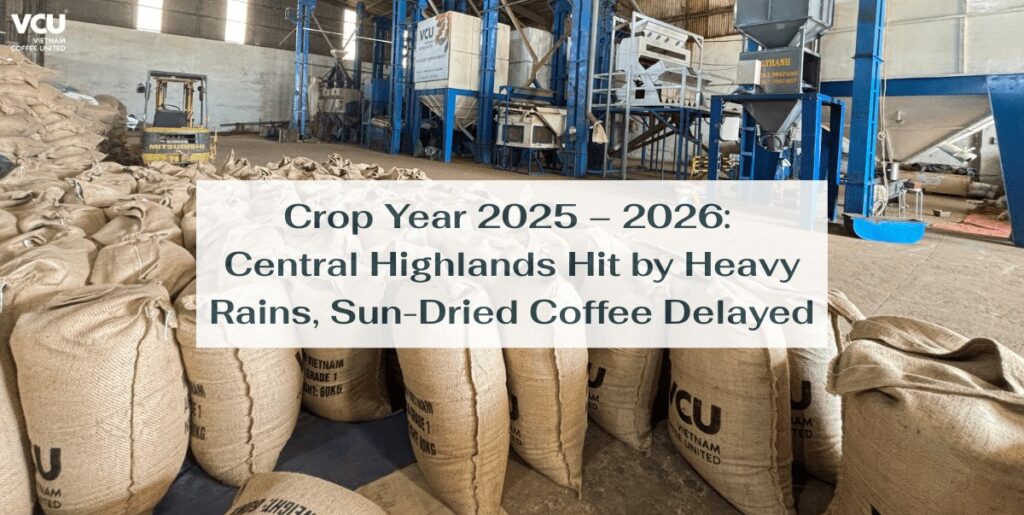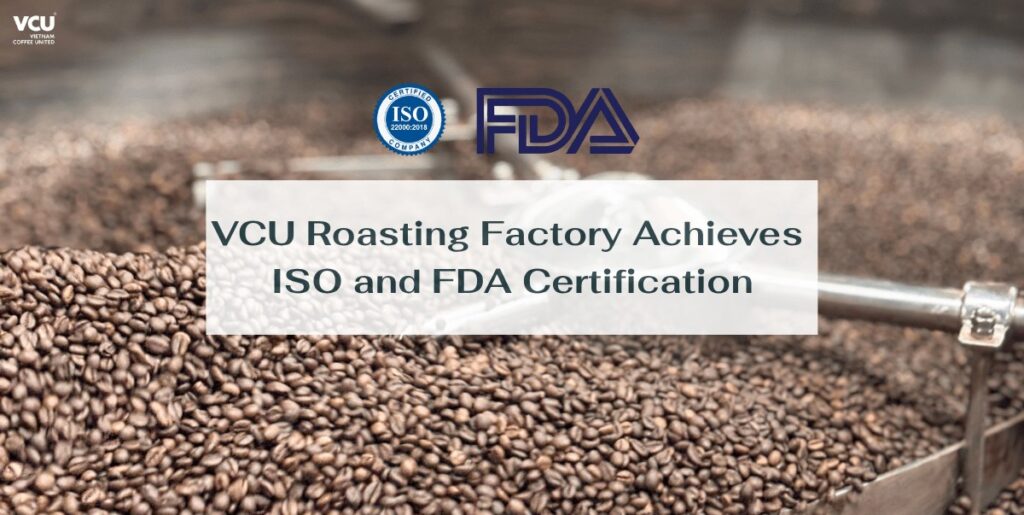First Crack – The First Pop in Coffee Roasting
What is First Crack?
First Crack is a crucial term in coffee roasting. It’s considered a pivotal moment, a signal, or a cue for roasters to recognize the roast level.
Also known as the first pop or first crack, it occurs at around 196°C (385°F) and marks an important transformation in the coffee beans. At this moment, a large amount of moisture in the beans evaporates, and the beans expand in size. This indicates that the beans are approaching a stage where they can be brewed.
Regarding the first crack, it is an exothermic reaction, meaning the coffee beans release energy in the form of steam, along with carbon dioxide. The beans almost double in size and shed most of their silver skin, but oil (lipids) has not yet appeared on the surface.
If you’re a roaster, don’t forget to take detailed notes of the cracks in your roasting log.
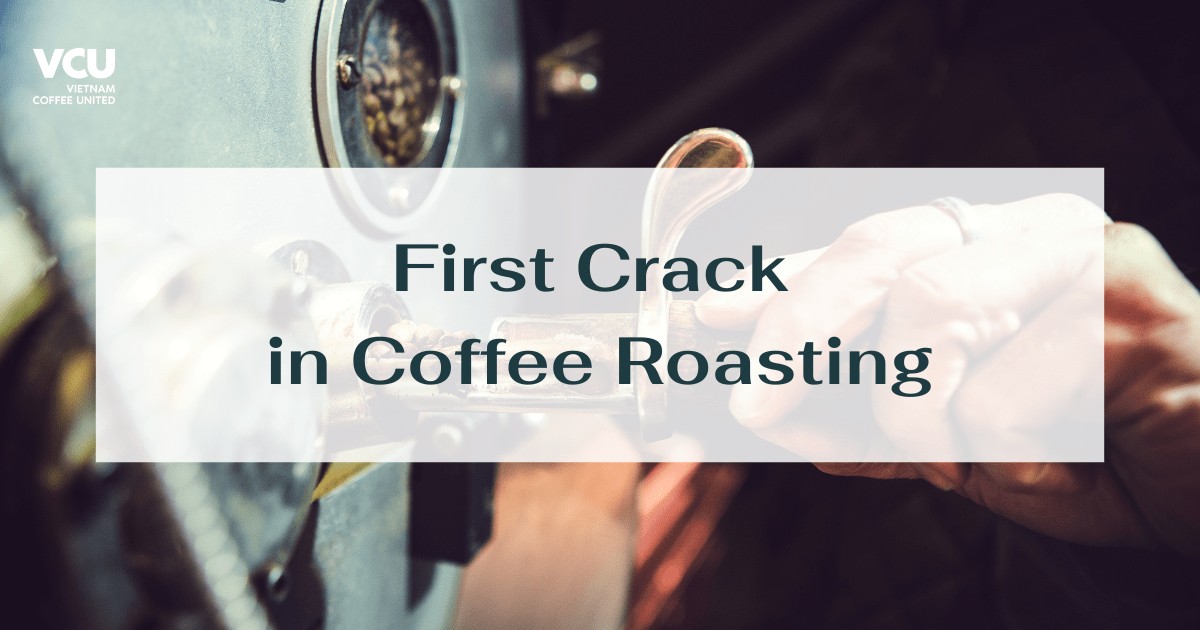
How to Identify the First and Second Crack?
There are two ways to recognize cracks: through hearing and observing the bean’s structure. When the beans are hot enough and the water inside starts to evaporate, moisture builds up and increases internal pressure, causing the beans to crack with popping sounds.
From the moment the first crack occurs until the roasting process finishes, it typically accounts for 10–35% of the total roasting time. This percentage corresponds to the roast level, from Light to Dark. Keep in mind, however, that this percentage is not fixed, as it depends on the provided temperature and the total roasting time of the batch.
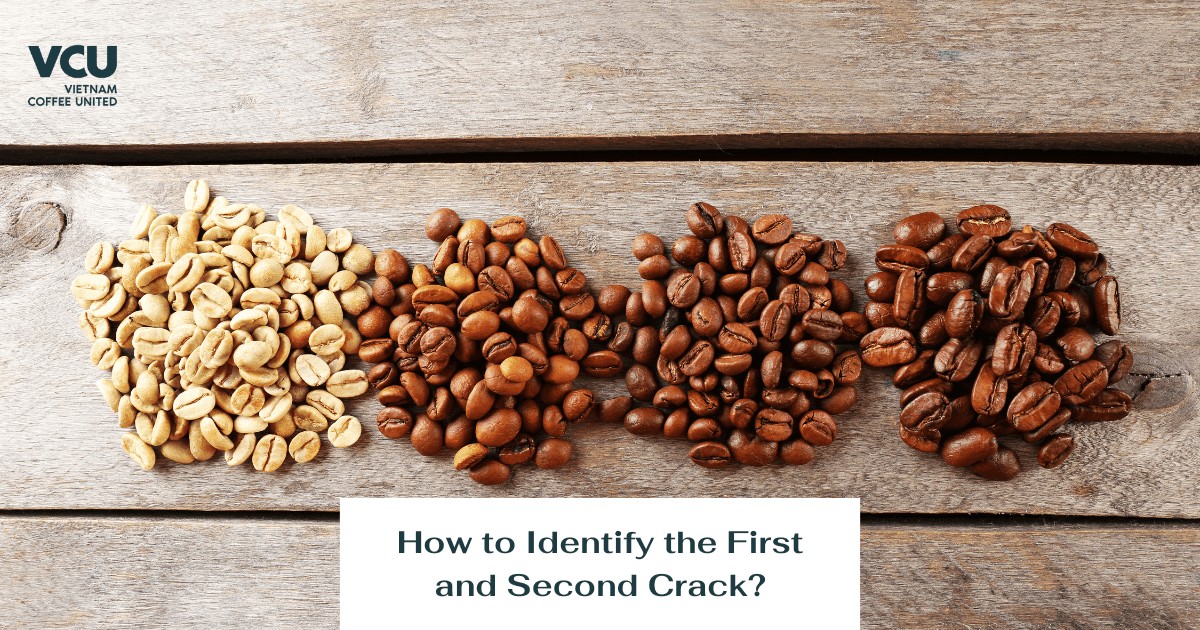
Why is the First Crack Important?
During roasting, coffee beans undergo numerous continuous chemical and physical transformations, such as color changes, weight loss, size increase, and the release of lipids. Most importantly, there are the first and second cracks.
In the case of the first crack, think of it as the coffee reaching a stage where it’s nearing brew readiness. The roaster’s job is to focus on selecting an endpoint for the roast, studying how to maximize the beans’ aroma, flavor, and color.
Remember, to become a professional coffee roaster, it takes time to learn the theory, practice, and conduct research. Don’t be too disappointed if you experience a few failures along the way.
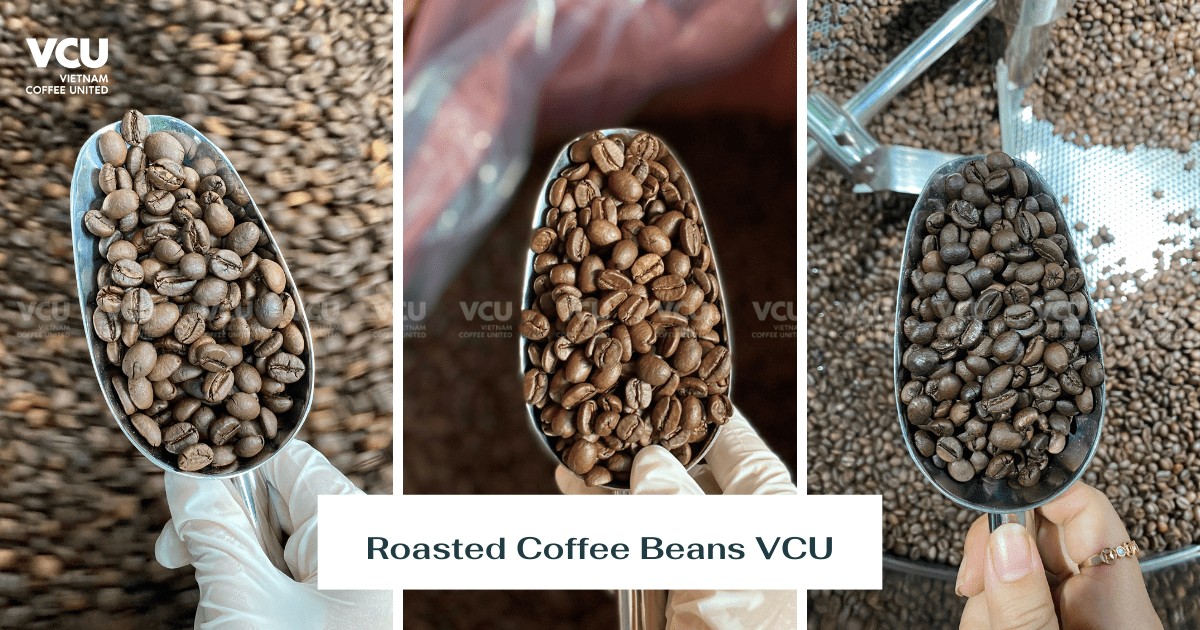
Contact Information
VCU Joint Stock Company (VCU JSC)
Address:
– Roasting Facility: Residential Group 6, Chu Prong Town, Chu Prong District, Gia Lai Province
– Green Bean Facility: Ia Der Commune, Ia Grai District, Gia Lai Province
– Hotline: +84 941 203 879
– Fanpage: VCU – Vietnam Coffee United
– Email: info@vietnamcoffeeunited.com
Reference: perfectdailygrind.com

